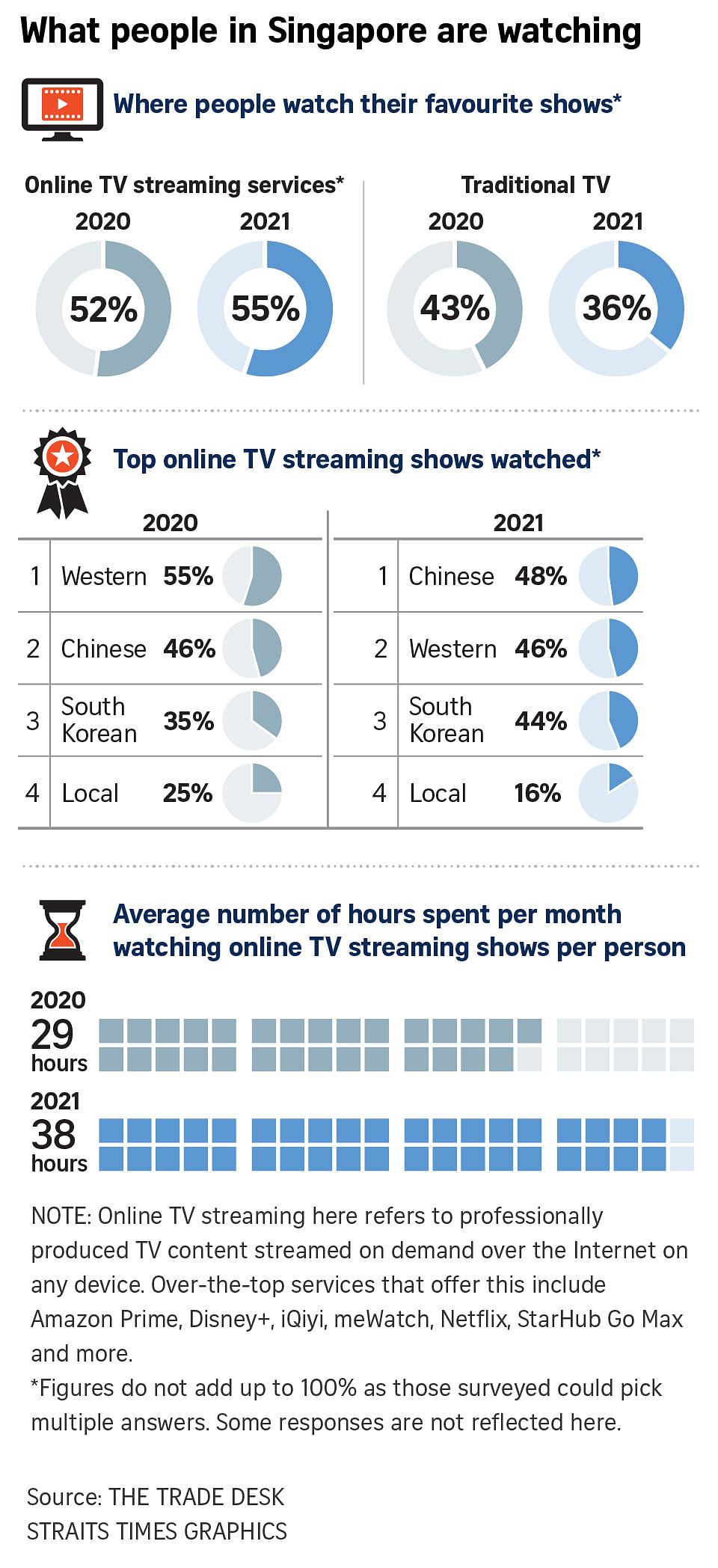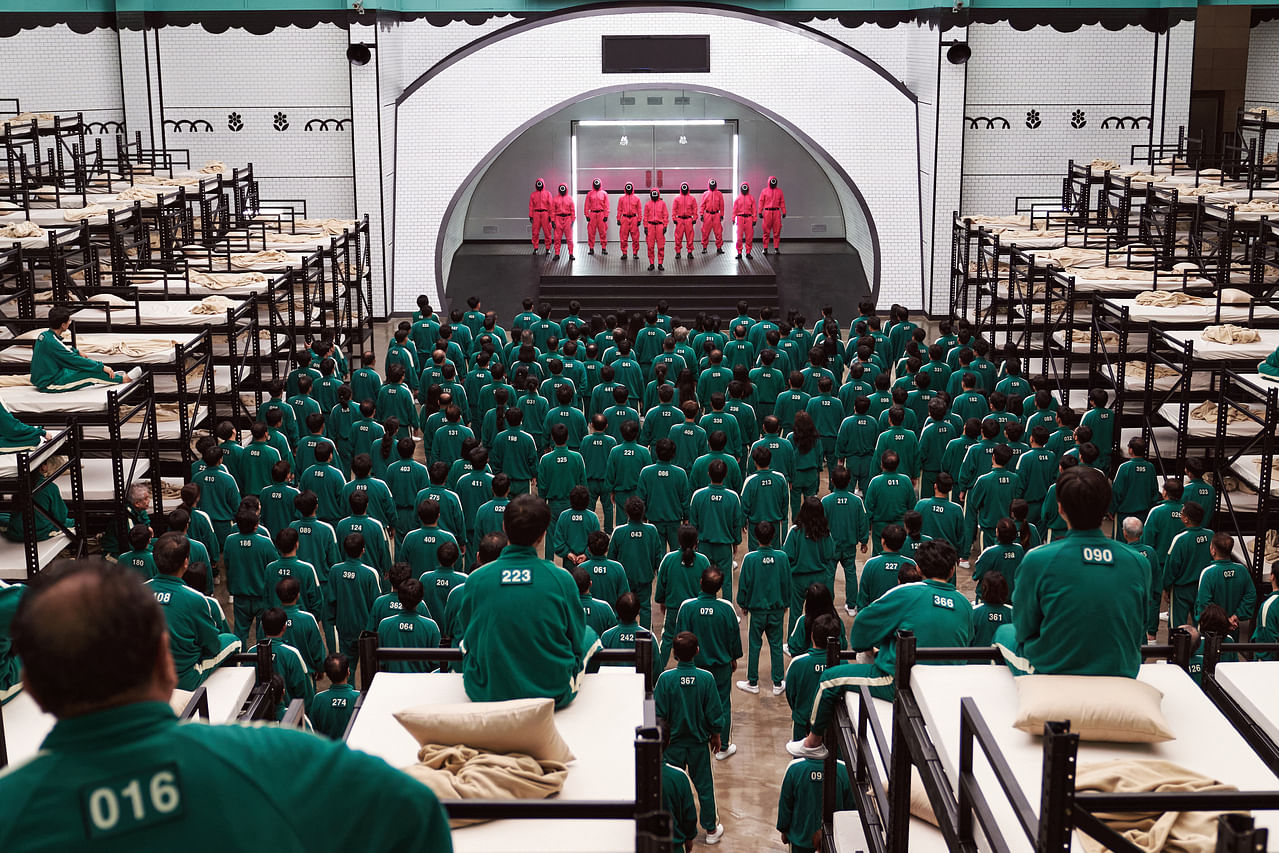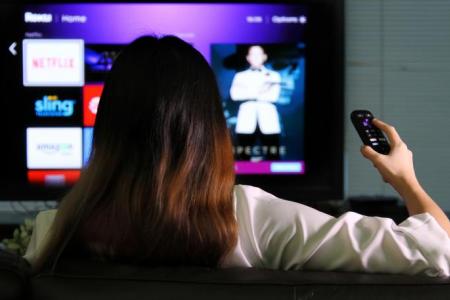Online TV streaming in Singapore gets boost from WFH, South Korean shows
Lured by South Korean TV shows and working from home amid the Covid-19 pandemic, more Singapore consumers tuned in to streaming services for their television fix last year, at the expense of traditional TV programmes.
A report has found that 55 per cent of viewers here said they watched their favourite shows on over-the-top (OTT) video streaming services such as Netflix and iQiyi last year, up from 52 per cent the year before.
But there was a drop for traditional TV, with 36 per cent of respondents remaining loyal viewers last year, down from 43 per cent in 2020.
The report released last month by advertising technology company The Trade Desk polled about 400 people here aged 16 and above in November last year.
OTT services stream professionally produced TV content on demand over the Internet on any device. They include Amazon Prime, Disney+, Mediacorp's meWatch, Singtel Cast, StarHub Go Max and Viu.
But OTT services exclude platforms that also stream videos created and uploaded by consumers, such as YouTube and Facebook.
Traditional TV refers to TV content broadcast on a fixed schedule to TV sets, such as free-to-air shows from Mediacorp.
The report also showed that the total number of hours watched per month on OTT services jumped 27 per cent last year from the year before, to hit more than one billion.
On average, OTT viewers here spent 2.3 hours a day last year watching shows, while heavy users spent six hours doing so. This contrasts with 1.6 hours of regular TV programming watched on average.
In 2020, it was 2.2 hours for OTT and 1.8 hours for traditional TV.
The shift from traditional TV viewing to online streaming on OTT services could be due to factors such as an always-on lifestyle becoming the norm here, said Ms Jennie Johnson, The Trade Desk's senior marketing director for South-east Asia, India, Australia and New Zealand.
The pandemic has also "ushered in an accelerated shift to OTT", she said. The Trade Desk said that in South-east Asia, this was due partly to Covid-19 causing people to work from home and binge on shows at their convenience.
Ms Johnson said the report also showed that viewers prefer the flexibility of OTT services for watching shows on demand. This is especially so for Generation Z, those aged 16 to 24, who enjoy watching shows outside their homes.
Unlike traditional TV, which can be watched only on TV sets on a fixed schedule, OTT shows can be watched by viewers whenever they want on a variety of devices, be they their TV sets, laptops, tablets or phones.
Another possible reason for the shift to OTT: high-quality shows from different countries are now available on demand. Ms Johnson said these shows are often not always readily available on traditional TV at a viewer's convenience.
South Korean shows, in particular, have jumped in popularity, with 44 per cent of OTT viewers in Singapore watching South Korean content last year, compared with 35 per cent in 2020.
And this was at the expense of Western shows.

"In the past few years, we have seen how K-pop and K-fashion, as well as Korean dramas, have become a prominent sub-culture for young people in South-east Asia and Singapore," said Ms Johnson, pointing to how South Korean shows have emerged as among the most popular on OTT services.
She said that younger viewers, including younger millennials aged 25 to 34 as well as Gen Z, are attracted to the accessibility of South Korean content and its universal themes. "Over the years, Korean shows have evolved to include diverse themes with strong plots that easily resonate with viewers."
Some South Korean shows are, for now, available here only on OTT services, such as last year's hit shows Squid Game and Hometown Cha-Cha-Cha on Netflix.

But for some fans of South Korean shows, watching them on traditional TV is still the way to go.
Retired bank employee L. Ye, 68, said that she is not technologically savvy enough and has connectivity issues with streaming.
Another issue is that many South Korean shows on OTT services are not dubbed, which makes them harder to follow as the subtitles can go by very quickly.
"When you read subtitles, you can't watch all the action going on in the show," said Ms Ye, adding that she prefers to watch programmes dubbed in Mandarin or English on traditional TV.
Get The New Paper on your phone with the free TNP app. Download from the Apple App Store or Google Play Store now


